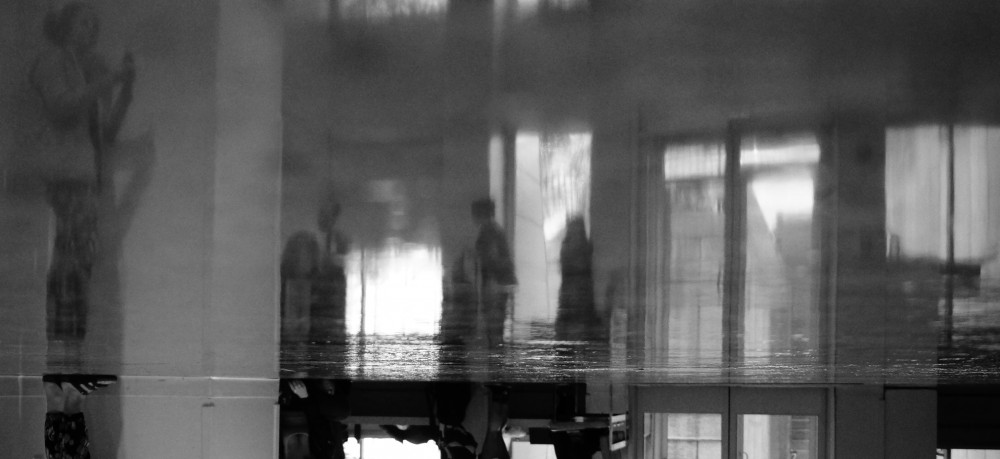GVSU students facilitate ‘Real Spaces’ exhibition

GVL / Courtesy – Paul WittenBraker “Real Spaces”
Sep 19, 2016
Grand Valley State University is home to many pieces of artwork, varying in medium, size and location. While the students in the image studio class this semester can certainly appreciate visually pleasing art, they decided to take it a step further.
“Real Spaces” was unveiled Wednesday, Sept. 14 at GVSU in the Padnos Student Art and Design Gallery in the Calder Center on the Allendale Campus. During the reception, viewers were able to speak to the student artists about their pieces in the exhibition.
This two-day exhibition was designed by GVSU student Annie Teall in collaboration with visual studies professor Paul Wittenbraker and collectively produced and curated by members of the image studio course, including: Ashley Acton, Alex Adams, Abigail Andrusiak, Sabrina Antcliff, Kenzie Cargill, Jane Dandron, Megan Galvin, Carly Johnson, Gibsyn Martin, TJ Mathieu, Kendra Myers, Laura Sample, Annie Schoonmaker, Grace Sementkowski and Ryleigh Wilson.
“Real Spaces” featured a collection of images, all taken in the gallery space. Students in the class played with lighting and angles to create slightly manipulated images of the gallery. The images were intended to serve as different disruptions of the space that already exists.
The final images were then installed back into the gallery in the location they were taken in, creating echoes of objects and spaces in the gallery. The result is a warped view of the once angular gallery walls, creating a new, contorted perspective for observers.
“A lot of what the class is about is investigating how images affect the viewer in ways that they are aware of and way that are unconscious,” Teall said. “This was sort of a good way to introduce that as a concept, to show how images represent space but not be spatial.”
The idea for the project came from a reading pulled from the book “Real Spaces” written by theoretical artist, David Summers. The reading emphasized the notion of virtual space and how art operates in both real and virtual space.
Teall used the example of sculpture to further illustrate the idea. A sculpture is a real thing in real space, whereas images create virtual space people can look into. The class sought to investigate ways to merge the real space of the gallery and the virtual space of the images taken in the gallery together.
“Real Spaces” sought to draw viewers’ attention away from the actual photographs and toward the space around the photos, or the new space the photos create. The exhibition focused less about capturing a moment or an image and more about letting the audience take on a new perspective. When an environment is warped, people are more likely to see certain things they may have missed before.
“The goal is, when people come the gallery, they are more aware of the space that they’re inhabiting,” said Megan Galvin a student in the image studio class.
This unique exhibition demanded viewer participation in an unconscious way. Upon entering the gallery space, visitors were forced to piece together their surroundings in a way they are not used to. They knew exactly where they are, yet their minds had to work hard to make sense of the space.
“We were really aiming for an exhibit that basically confronts the viewer and forces them to examine the image and the space,” Teall said.























